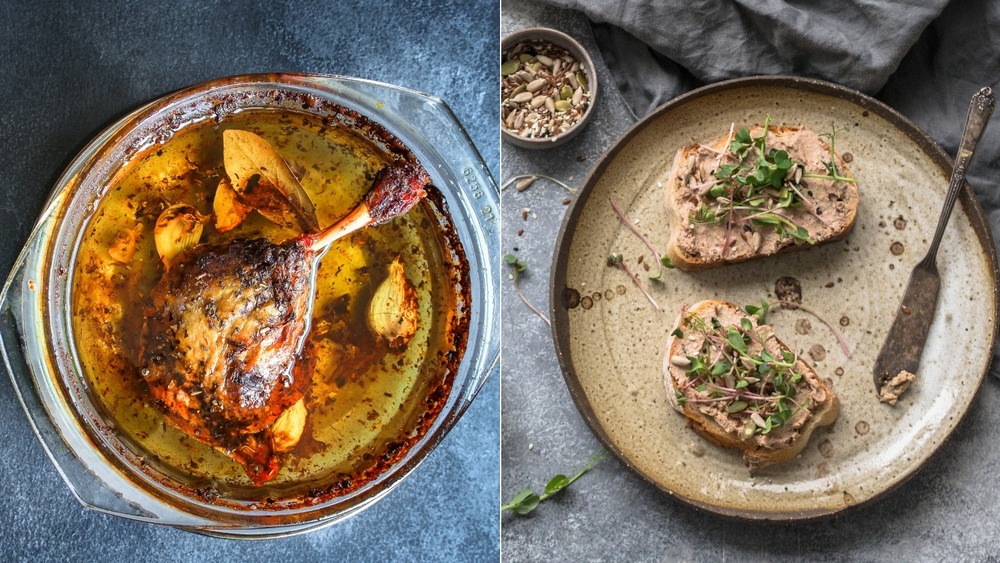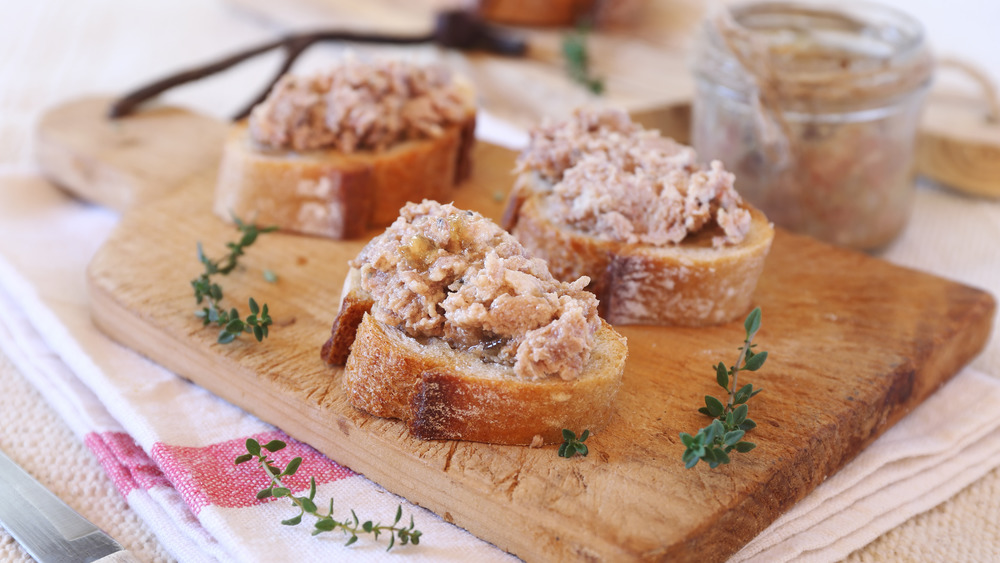This Is The Real Difference Between Rillettes And Confit
Depending on who ask, charcuterie can be something incredibly fancy or an adult's version of a Lunchables (simply ask Reddit user angry_noodles). The art of charcuterie can be traced back a couple of centuries. Serious Eats denotes that the French started using the word, which translates to flesh (chair) cooked (cuit), in the 15th century. But, at that time, it wasn't what everyone knows it to be today. Fifteenth century charcuteries were storefronts that specialized in curing and preparing pork and meat organs (also known as offals) for public consumption. Serious Eats cites that raw pork wasn't something that could be sold, interestingly enough. Because of this culture of preserving and curing meats, the world over now has the ability to enjoy things like pâté, terrine, boudin, rillettes, and confit. While it is known that a pâté can be a terrine, a terrine cannot be a pâté, and boudins are in a league of their own. One must wonder where that leaves rillettes and confit. Do they have the symbiotic relationship that pâtés and terrines have? Or are they something entirely different like the boudin?
Confit can be used as a base for rillettes
Forcemeat Academy reports that rillettes and confit have a similar relationship to the one between the terrine and pâté. In other words, you can use confit to make rillettes, but not the other way around. So, what is a confit? When a chef confits a piece of meat (normally a duck leg, according to Forcemeat Academy), they are essentially using a cooking method that will preserve it. To make a confit, one would slowly cook a piece of meat in animal fat, according to French Cooking Academy. The end result is something that falls off the bone.
Now, what kinds of meat can you confit? Forcemeat Academy notes that you can confit poultry legs and wings (this includes duck, chicken, turkey, and goose), pork, and even vegetables (although this is cooked in vegetable oil). So, where does the rillette come in? Forcemeat Academy explains that they are essentially a potted and shredded meat spread (think pâté, but with some chunk). Like confits, rillettes are fatty and can use pork and poultry to be made. So, how is the relationship between confit and rillettes symbiotic? Well, once you've confited your meat, you can shred it a bit more and use that meat to make a rillette. Once you've made a fatty and delicious (and slightly chunky) spread, you've effectively turned a confit into a rillette for your charcuterie board.

